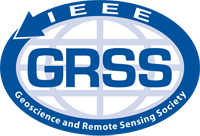HD-08: On the acceleration of hyperspectral image unmixing and compression for time-critical applications
Sebastian Lopez and Lucana Santos
Sunday, July 26
08:30 - 12:30
Abstract:
With the advent of new hyperspectral sensors and their increased spectral, spatial, and temporal resolutions, the availability and dimensionality of hyperspectral data is continuously increasing. This demands fast processing solutions that can be used to compress and/or interpret remotely sensed hyperspectral images, hence performing a more efficient exploitation of hyperspectral data sets in applications under strict real-time requirements. Within this scenario, on-board processing systems have emerged as an attractive solution in order to decrease the delays between the acquisition of a hyperspectral image, its processing/interpretation, and the decision on a proper action to be taken according to the information extracted from the image. This can be mainly achieved in two ways: 1) performing on-board (lossless or lossy) compression of the acquired data before transmitting them, so that the remotely sensed hyperspectral images are downloaded and further processed at the ground level; and/or 2) processing the hyperspectral images according to the needs of an application (or a set of them), so that only the obtained results (i.e. number and location of thematic classes after performing a classification/clustering of the sensed images, location of a set of sought targets within an image, pure spectral signatures (endmembers) together with their correspondent abundance factors obtained after spectral unmixing, etc.) are transmitted. Both scenarios are not mutually exclusive since a possible framework could be to process the image on-board and then, compress the results obtained prior to the transmission to ground.
During the last years, field programmable gate arrays (FPGAs) and graphics processing units (GPUs) have consolidated as the preferred choices for the fast on-board processing/compression of hyperspectral images due to the following three main reasons. First, because of their outstanding high performance computing capabilities, which allow them to perform a formidable amount of operations per unit of time. Second, because when compared to other high-performance computing platforms able to provide similar computational performance and design agility (such as clusters of computers), FPGAs and GPUs offer clear advantages in terms of size, area, and energy efficiency. Last but not least, because they are nowadays widely commercially available at very competitive prices (in the order of hundreds or a few thousands of euros, depending on the model).
According to the speaker’s background and expertise, this tutorial has been divided into two main parts: one devoted to the utilization of FPGAs for the real-time processing/compression of remotely sensed hyperspectral images (given by Prof. Sebastian Lopez) and the other devoted to the same goals but focused on GPUs (given by Dr. Lucana Santos). In each part, we will first review a set of general concepts about the targeted computing platform and then, we will introduce a set of practical cases in which each technology has been successfully used for the task of processing and/or compressing hyperspectral images. At this point, useful tips and tricks will be uncovered in order to maximize the levels of performance achieved at each exemplary case. Moreover, future challenges and directions within this research area will be also highlighted and discussed.
Biography:
Sebastian Lopez is an Associate Professor at the Institute for Applied Microelectronics (IUMA) of the University of Las Palmas de Gran Canaria. He is a member of the IEEE Geoscience & Remote Sensing as well as an associate editor of the IEEE Journal of Selected Topics in Applied Earth Observations and Remote Sensing (J-STARS). He is also a program committee member of different international conferences including the SPIE Conference on Satellite Data Compression, Communication and Processing, IEEE Workshop on Hyperspectral Image and Signal Processing: Evolution in Remote Sensing (WHISPERS), and SPIE Conference of High Performance Computing in Remote Sensing. Furthermore, he was the program co-chair of the last two aforementioned conferences for their 2014 editions. He has published more than 80 papers in international journals and conferences. His research interests include real-time hyperspectral imaging systems, reconfigurable architectures, video coding standards, and hyperspectral compression systems.
Lucana Santos received the Ph.D. degree at the Integrated Systems Design Division of the Institute for Applied Microelectronics (IUMA). In 2011 she was funded by the European Network of Excellence on High Performance and Embedded Architecture and Compilation (HiPEAC) to do research on architectures for hyperspectral image compression at the European Space Research and Technology Centre (ESTEC) in The Netherlands. Her research interests include hardware architectures for remote sensing applications, video coding standards and reconfigurable architectures.




